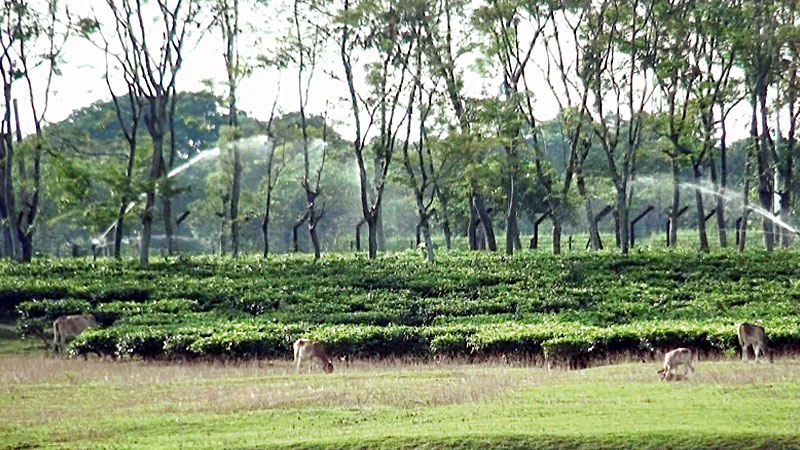Bright prospects for tea farming in Lalmonirhat
Five upazilas of Lalmonirhat district have bright prospects for tea farming as the soil of the area and its geographical position are suitable.
Farmers have cultivated tea plants on 89 acres in the five upazilas of the district. While visiting the border areas from Boura point of Patgram upazila to Tinbigha corridor of the district, this correspondent found Indian tea labors watering tea gardens.
As the demand for tea is increasing rapidly across the world, the northern region can contribute significantly to tea exports and the country’s economic growth.
According to a survey by the department concerned, the demand for tea consumption is increasing at 3.5 per cent at present but production has increased by only 2.5 per cent annually. Some 20 lakh new tea consumers are being added every year in the country.
“If tea farming is not expanded to new areas, our country would have to import tea from other sources in the near future,” the survey noted. The demand for tea in the country is 120 million kg but Bangladesh produces only 85 million kg.
The Bangladesh Tea Board (BTB) started tea cultivation in some areas of the Sadar, Adtmari, Kaligonj, Hatibandha and Patgram upazilas and set up some gardens in the district in 2007. Some tea farmers have already started plucking tea leaves from their gardens and have marketed them to local buyers. So far, 67 registered farmers have planted tea.
In 2013, the Bangladesh Development Bank (BDBL) financed Ferdous Alam, the owner of a few tea estates, to set up a leaf processing factory at Hatibandha upazila of the district.
In 2016, the factory first started its operations with locally produced tea leaves. But after two months, it became inoperative on account of insufficient voltage and irregular power supplies. BDBL sanctioned Tk. 24,415,000 while the rest of the amount was provided by the factory owner to set up the factory. Alam expressed his frustration as the factory has not been in operation for a long time. “All the machines will go out of order if they remain idle fora long time. I’m worried how to repay the money,” he said.
Last year, green leaves were sold at Tk. 30 to 38 per kg. But this year, leaves were sold only at Tk. 8 per kg. Farmers are very worried, he said. He demanded regular power supplies and the requisite voltage from the Power Development Board and urged the authorities to look into the matter immediately. He has also alleged that some traders were importing low-quality Indian leaves to destroy the locally produced tea leaves’ market.
Arif Khan, development officer of Lalmonirhat Tea Board office, told The Independent: “It’s certainly possible to produce quality tea like the Darjeeling variety in Lalmonirhat as the soil and weather are very much conducive to tea farming.”
This year, nearly 20 million kg tea were produced, which is more than the previous year’s figure. Hence, the price of green leaves this year is lower than that of last year, he added.
The deputy director (DD) of the Tea Board, Monir Ahammed, said: “Tea faming has the potential to eradicate poverty from this area. If farmers are interested in tea cultivation, they will be benefited and the country’s economy will grow.”
He added: “Tea farming is more profitable than traditional crops. However, it’s a long-term process. Farmers seek rapid returns. A tea plant lives 100 years and gives about 60 years’ returns.”









